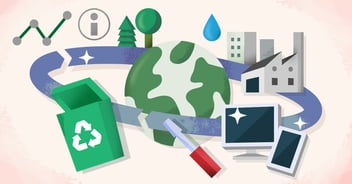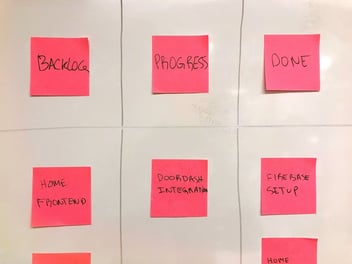Internationally, 70 % of consumers are interested in buying more sustainable and responsible products and services. According to the Nielsen Global Sustainability survey, 66% of consumers are willing to pay more for responsible products. At the same time, sales of responsible products are growing four times faster than traditional products. This is particularly evident in B2B sales, as B2B decision-makers look for responsibly provided services. As businesses set targets to reduce their emissions, for example, interest in solutions that help achieve this goal increases. Responsible business takes into account both environmental sustainability and social and economic responsibility.
Responsibility as part of the digital customer experience
Growing interest in different responsible products and services offers the opportunity to stand out from the competition in digital sales. Compared to a brick-and-mortar stores, digital sales can offer more comprehensive information about the responsibility and sustainability of products, thus helping the customer make responsible choices.
Below are some ways in which you can use responsibility to stand out positively:
- In the online store, provide comprehensive information on the responsibility of products or services, such as the product’s sustainability and repair potential, carbon footprint, origin or sustainability certifications.
- Help customers understand the sustainability impacts of their purchases, for example by providing data on the carbon footprint.
- Use responsibility as part of your customer loyalty program, for example by rewarding customers for making responsible choices or choosing environmentally friendly shipping options.
- Optimize the order-supply chain to avoid unnecessary waste in storage and production. For example, you can use predictive analytics or digital tools to help customers find the best product, such as virtual tools for fitting clothes or designing spaces.
Because verifying and collecting data about sustainability requires a great deal of background work and expertise, it is worth using this know-how as a way to stand out from the competition, particularly in the B2B market. Can your company offer carbon footprint reporting for business services such as leasing cars or commercial premises and incorporate it as part of the customer experience?
New circular economy services are rapidly growing in popularity
The circular economy is growing rapidly and seems to be replacing traditional business rather than creating parallel business alongside it. The circular economy is a much broader concept than simply recycling goods, as it seeks to ensure that the right things are in the right places at the right time. For example, an electric drill is used for an average of 13 minutes over its lifecycle. The circular economy ensures that products are circulated in various ways between users, rather than everyone needing to buy each product for their own use.
There are many kinds of business models in the circular economy, such as extending the lifecycle of a product, the sharing economy and platforms, and products as a service. Exciting examples of circular economy business models can be found both in Finland and the Nordic countries.
In Finland, for example, online stores for second hand clothing have grown rapidly and already offer a shopping experience similar to that of online stores of retailers. Businesses selling second hand phones food waste from retail stores and restaurants are listed among the fastest growing technology companies in Finland.
Digital solutions help build a new circular economy business
Digital sales and partnerships are keys in the transition to a circular economy. These models support more close-knit customer relationships as the company provides services throughout a product’s lifecycle in interaction with the customer.
In the future, instead of the traditional chain from manufacturer to wholesale, retailer and consumer, products will circulate multiple times from user to the user in peer-to-peer stores or from the user back to the retailer when the product is offered as a service, requiring advancements in retail software development. These types of circular economy services emphasize the need to receive and share information about the product in a timely manner at all stages of the value chain. As focus shifts increasingly to the sale of services, sales and sales capabilities play a critical role throughout the value chain. Similarly, various partnerships related to maintenance and distribution extend the lifecycle of products and ensure a seamless customer experience.
As the purchase decisions of both B2C and B2B customers are increasingly influenced by sustainability, companies should provide information and assistance to help customers find a responsible solution. Making responsibility concretely visible throughout the digital transformation in customer experience brings genuine benefits to both the customer and the business.
Are you interested in learning more about the topic? Watch the recording (in Finnish) of our “Sustainability as a competitive advantage in digital sales” webinar here.



